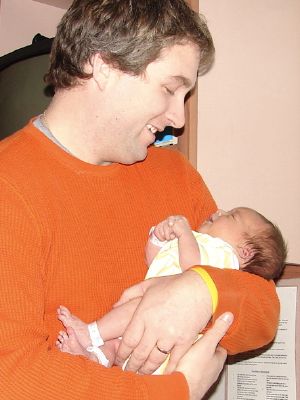The effect of masculinity-femininity on face preferences
Perrett et al. (1994) found that exaggerating the physical differences between attractive faces and average faces (i.e. creating caricatures of attractive faces) increased their attractiveness. In other words, Perrett et al. demonstrated that attractive faces are not ‘only average’ (as some researchers who proposed the Averageness Hypothesis of attractiveness had suggested) but that some exaggerated facial characteristics are attractive. Although Perrett et al. presented evidence that attractive faces deviate systematically from an average shape, precisely what exaggerated facial characteristics are attractive remained unclear.
 |
| Peahens prefer peacocks with exaggerated masculine traits |
|---|
So what exaggerated facial characteristics are considered attractive? In many non-human species, individuals with exaggerated sex-typical physical traits (i.e. exaggerated physical characteristics that are more pronounced in one sex but not the other) are preferred as mates. For example, peacocks with particularly large and colourful tail feathers are preferred as mates by peahens. Biologists have proposed that these exaggerated sex-typical traits signal an individual's health and reproductive capabilities with individuals with the most exaggerated sex-typical traits being the healthiest and most fertile. Because choosing healthy and fertile mates will increase an individual's reproductive success (by giving them the healthiest offspring), it is perhaps unsurprising that in most non-human species males with exaggerated masculine characteristics and females with exaggerated feminine characteristics are preferred as mates.
 |
 |
 |
 |
| Femininised Female Face | Masculinised Female Face | Femininised Male Face | Masculinised Male Face |
|---|
In most non-human species males with exaggerated masculine characteristics and females with exaggerated feminine characteristics are preferred as mates. Because of this, Perrett et al. (1998) investigated the effects of manipulating the masculinity-femininity of male and female faces on judgements of their attractiveness. First, Perrett et al. manufactured composites of male and female faces using computer graphic methods. Next, they used the male and female composites to define a masculinity-femininity continuum and used this continuum to manipulate the masculinity-femininity of male and female faces. In other words, they manufactured versions of male faces with in which masculine facial characteristics (e.g. pronounced brow ridges and jaws) were exaggerated and others in which feminine facial characteristics were exaggerated (e.g. large eyes and full lips). Similarly, versions of female faces with exaggerated masculine and feminine facial characteristics were also constructed. The participants in the Perrett et al. study were then shown pairs of masculinised and femininised versions of the same faces and were asked to indicate which version was more attractive. For female faces, both male and female participants demonstrated very strong preferences for the femininised versions of the faces. Intriguingly, however, both male and female participants also preferred the femininised male faces to the masculinised ones. So in both male and female faces, exaggerated feminine characteristics are attractive. To many researchers, this was a very surprising finding given that in most non-human species masculine males are preferred to feminine ones. Although not all studies have found that feminine male faces are preferred, no studies have observed strong preferences for masculine faces.
Why don't we behave like other animals?
 |
| Feminine faces are associated with positive personality traits |
|---|
So why do we not behave like individuals from non-human species do? In other words, why do we generally prefer feminine male faces to masculine ones? To investigate this issue, Perrett et al. (1998) next investigated the personality characteristics that people automatically ascribe to masculine and feminine faces. For both male and female faces, positive personality traits (e.g. trustworthy, warm personality, ‘good parent’) were typically ascribed to femininised faces while negative personality characteristics (e.g. untrustworthy, cold personality, ‘bad parent’) were typically ascribed to masculinised faces. Perrett et al. (1998) noted that unlike most non-human species, humans form very stable relationships with their mates and engage in bi-parental care (i.e. both the father and the mother play important roles in raising offspring). This may explain why feminine individuals of either sex who are ascribed positive personality characteristics that will be important in long-term relationships (but not necessarily in short-term relationships) and who are perceived as being ‘good parents’ are considered attractive.
Individual differences in women's preferences for masculine men
| Percent feminisation preferred when women are at high and low conception risk |
|---|
 |
Although Perrett et al. (1998) found that feminine male faces were generally preferred to masculine ones, Perrett et al. (1998) also noted that women varied greatly in the extent to which they considered feminine men to be more attractive than masculine men. Because of this, a number of recent studies have investigated why some women are more attracted to femininity than other women are. For example, Penton-Voak et al. (1999) found that women who were not using oral contraceptives (i.e. ‘the pill’) were more attracted to masculine male faces during the phase of their menstrual cycle when their fertility is highest (i.e. around ovulation) than they were at other times. In other words, when women are most likely to be able to conceive they appear to become more attracted to men who will father particularly healthy offspring (i.e. masculine men). At other times, however, women appear to be more attracted to ‘caring and sharing’ men who will make good long-term partners. Little et al. (2001) also found that women who consider themselves to be particularly attractive show stronger preferences for masculine men than women who consider themselves to be relatively unattractive do. Little et al. (2001) suggested that this link between women's own attractiveness and their preferences for men who are generally perceived to be unwilling to invest time and resources in their partners and children may occur because masculine men are more willing to invest time and resources in highly attractive women.
Suggested further reading
- (300 kB) (1998). Effects of sexual dimorphism on facial attractiveness. Nature, 394: 884-887.
- (212 kB) (1999). Menstrual cycle alters face preference. Nature, 399: 741-742.